

Prerequisite Reading
We strongly recommend reading of our post “The Need for the Protestant Reformation” prior to reading this or any of the other Reformation posts we have written.
Introduction
Writers within the Roman Catholic Church acknowledge that many of the stories surrounding Francis, who was from the town of Assisi, Italy, are legends–that is, fabricated stories that had the purpose of promoting a religious, political, or social agenda. Even though legends permeate that man’s life story, there was a genuine spiritual awakening that took place through his efforts, though it was short-lived.
Conditions Throughout Europe in this Era
► Feudal system was in place.
► The peasant population clustered around the castle of the baron and became his vassals.
► Private wars were constant.
► Patriotism to a larger state disappeared.
► Each castle became the center for a small number of highway robbers/brigands.
► Italy was in chaos with anarchy spreading.
► Islam was threatening Europe. The Crusades against Islam had already started.
► Europe was at the point of total collapse.
Conditions in the Catholic Church – This Was the only Church in Europe at this Time
► The Pope held rights to lordship in this world, and supposedly in the world which was to come.
► Religious leaders were intoxicated with power, leading to religious and political tyranny.
► With the Pope being the governmental head, and the church filled with corruption, the form of government was referred to as “Pornocracy,” or “Rule of the Harlots.”
► Popes in the tenth century were said to have “lived like monsters, or like wild beasts.”
► Torture and horrific brutality were unleashed by the Roman Church against any protester. The main thrust of their efforts at this time was the Waldenses in France and northern Italy. The Fraticelli, which emerged from the Franciscan Revival, also became a focus of the Catholic Church’s brutality.
Lower-Level Clergy (Priests)
► The power wielded by priests went unchecked. Through the Mass they claimed the power to change the bread and wine into the literal body and blood of Christ.
► They claimed to hold in their own power the rights of entrance into heaven.
► Priests threatened the disobedient with eternity in hell.
► They showed a great disregard for their office, as they lived shameless lives.
► Religious benefits were sold to the highest bidder.
► Bribery and corruption were practiced with no shame.
► The whole atmosphere of the Church was tainted with corruption.
► The situation in the monasteries were no better. Behind the walls could be found the worst vices of the world.
Common People
► The disobedient (even the powerful) were threatened with eternity in hell.
► With the priests being a “little god,” the common people trembled and adored them.
► People were held in bondage with superstition.
► They were ignorant of the Gospel.
► Jesus was a mysterious figure bound on a cross, being separated from them, and they had no means by which to draw from His mercy.
► Their hearts were filled with terror.
► Not being taught they could or should have a relationship with Jesus, they were directed to invoke the names of the dead, like the mother of Jesus and other notable figures from the past, who they were taught would mediate and plead for mercy on their behalf.
► They were haunted, gloomy, terrified, frightened, and excited by sham miracles, supposedly performed by magical powers contained within the remains of the saints.
Veneration and Adoration of the Remains of Deceased Saints
These objects from the deceased could include:
► Skulls, limbs, hair, clothing, or objects they wore
► Dirt from their graves
► Wood from the cross
► Letters they wrote
Objects like these were often kept as a talisman. Pilgrimages to see and offer prayers before these objects were encouraged, as they became a significant source of revenue.
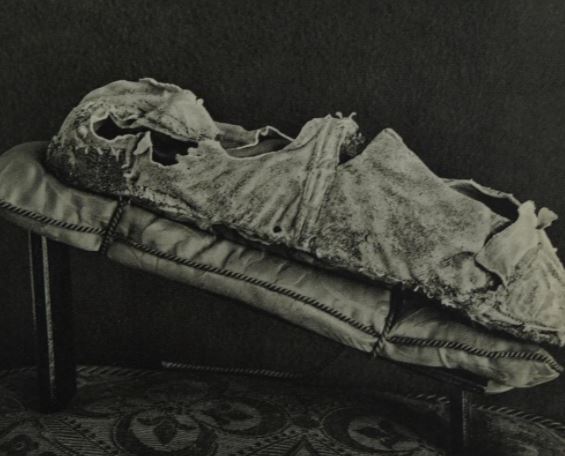
A relic, said to be a sandal of Francis: Preserved at the Basilica of Saint Clare at Assisi, Italy
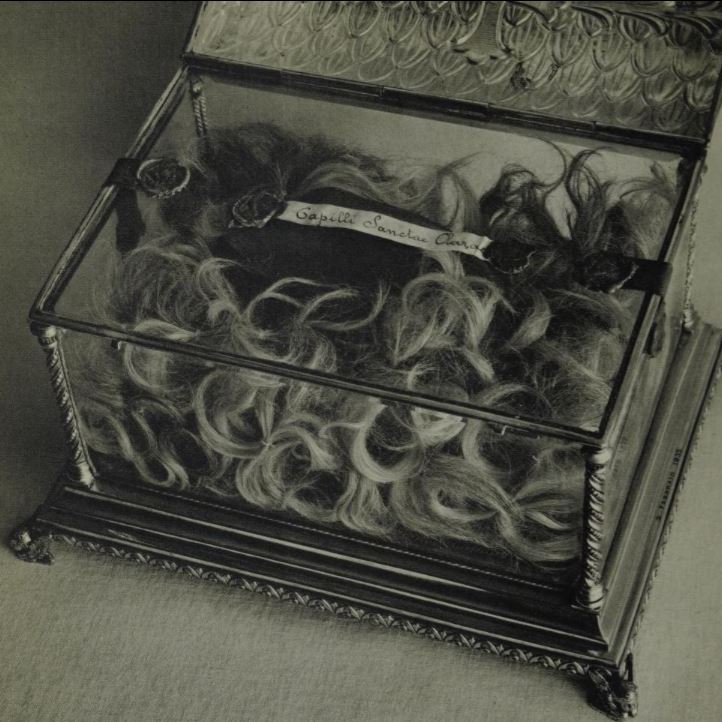
Said to be the hair of Clare of Assisi: Preserved at the Convent of St. Clare at Assisi. It was said that she had her hair cut off when she first went to the Porziuncola to offer her life to God.
Selling of Permits (Indulgences) to Reduce Time Suffering in Purgatory
The Church of Rome developed an elaborate scheme to fund their wars and construction projects, as well as other areas in which they needed finances.
One Catholic teaching is that when a person dies, they have to go to purgatory, a place of torment to have their sins “purged.” The implication of this teaching is that the blood of Jesus is insufficient–lacking in power to perfectly purify. Claiming Jesus’ blood is imperfect, individuals are required to complete the work of “purging” remaining sins through personal suffering.
Permits, known as indulgences, were sold to reduce the amount of time one would need to spend in purgatory. Preying on people’s fears and superstitions, the Catholic Church even sold permits for people who were already dead, in the hope that departed loved ones would also achieve a quicker release from purgatory.
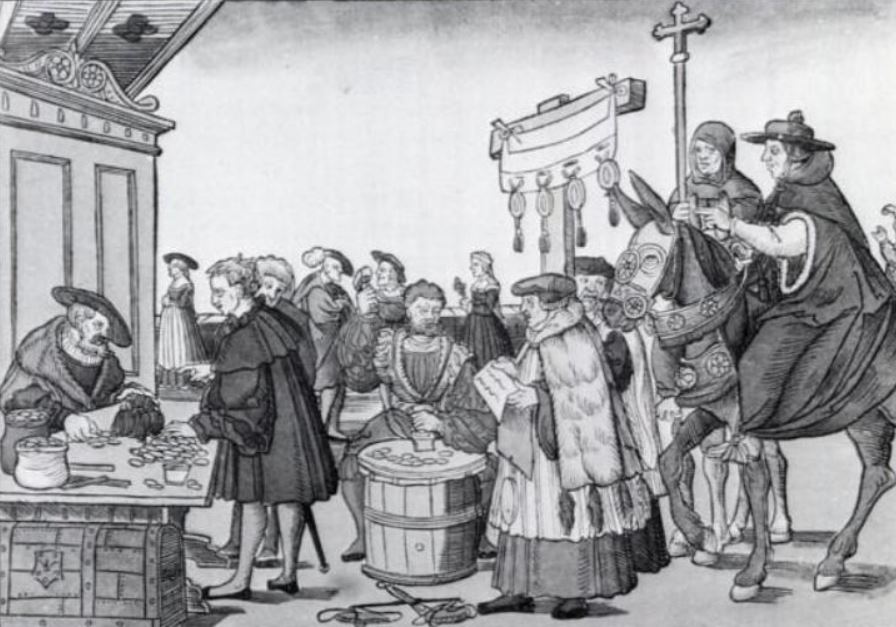
Selling of Indulgences
Other Characteristics that Led to the Francis’ Attempt at Reformation
► There was a growing consciousness that the Catholic Church was not true to its mission.
► People throughout Europe were disgusted whenever and wherever the Church exercised its authority.
► The Cathari, the Waldenses, and many other lesser known sects, were condemning and threatening the Church’s authority, and in response were being brutally persecuted for it.
► There was an increased desire from within the Church for reform and a return to evangelical simplicity.
► All of creation was waiting for someone to spark a revival, and Francis, from the Italian town of Assisi, was that spark.
► The Church of Rome began to feel its foundations being shaken, and within 300 years the Reformation was in full bloom.
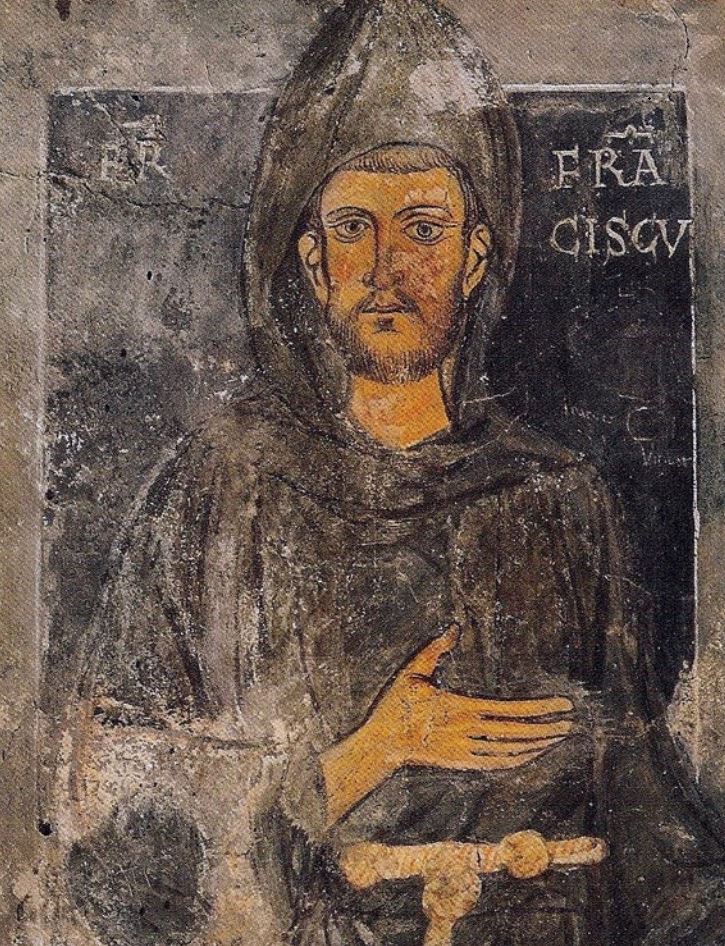
Oldest known painting of Francis: circa 1228, two years after his death
God Develops His Spark to Revive His Church
As with every revival there is a spark–an individual man or woman–that initiates for a community or nation a turning away from sin and back to God. The spark in this revival story is Francis, who was born in Assisi, Italy, in 1181 A.D.
Francis’ father was a wealthy silk merchant. This enabled Francis to spend his youth living a frivolous lifestyle, and he seemed to be a leader of others like him who spent all their time in the pursuit of pleasure.
In 1202, at 20 years of age, Francis enlisted to aid his town of Assisi to engage in a military campaign against the Italian town of Perugia, which was located about 12 miles away. During the engagement he was captured and held as a prisoner of war. His father ransomed him after one year, and though Francis initially sank into deep depression, in time his friends lured him back into his former self-centered lifestyle.

Italy, as well as all of Europe, was in turmoil. Two Italian cities went to war against each other—Perugia and Assisi. Francis fought on the side of Assisi.
The Emergence of a Man
In 1205, after Francis was part of another failed military expedition, he began to lose his taste for worldly life and his depression and despondence led him to begin seeking God.
While praying in the abandoned and run-down church of San Damiano, he heard God speak to him:
Francis, go and repair my church which, as you see, is all in ruins!
Francis immediately began to take action to repair the physical structure of the San Damiano church, but he eventually realized that God’s message was for him to restore the entire Catholic Church organization, rather than one building.
Using his father’s resources, he repaired San Damiano, which evoked his father’s wrath. His father had him flogged, and finally disinherited him. Francis renounced all his possessions and any rights of inheritance, and before the city magistrates he said,
Listen, all of you, and understand it well: Until this time I have called Peter Bernardone my father; but now I wish to obey God. I return him [his father] the money about which he is so anxious, and my garments, and all that he has ever given me.
Francis then left his father’s home and never returned.
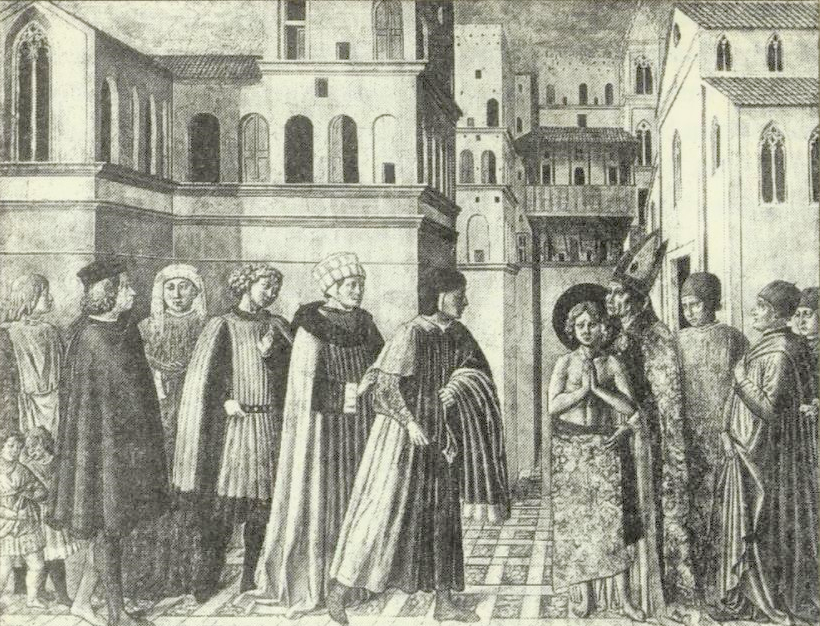
Francis renouncing all worldly goods before his father and city magistrates.
To collect finances necessary to continue repairs on San Damiano, Francis begged money door-to-door. For two years he spent his time restoring several ruined chapels around Assisi. One of them was the Porziuncola, a very small chapel, which became the birthplace and headquarters of the Franciscan Order.
On February 24, 1208, while in prayer, Francis heard the day’s scripture passage being read, which came from Matthew 10:7-10:
Go and announce to them that the Kingdom of Heaven is near. Heal the sick, raise the dead, cure those with leprosy, and cast out demons. Give as freely as you have received! Don’t take any money in your money belts—no gold, silver, or even copper coins. Don’t carry a traveler’s bag with a change of clothes and sandals or even a walking stick. Don’t hesitate to accept hospitality, because those who work deserve to be fed.
It was through that reading that Francis sensed God speaking to him, and in response to the impression he received from God, he said,
This is what I want, what I have been waiting for; this shall be from henceforth my daily, hourly practice.
Devoting himself to a life of poverty, he found a coarse woolen tunic–garments worn by the poorest peasants–and tied it around him with a knotted rope. He then began preaching throughout the region, with the topics being repentance, brotherly love, and peace.
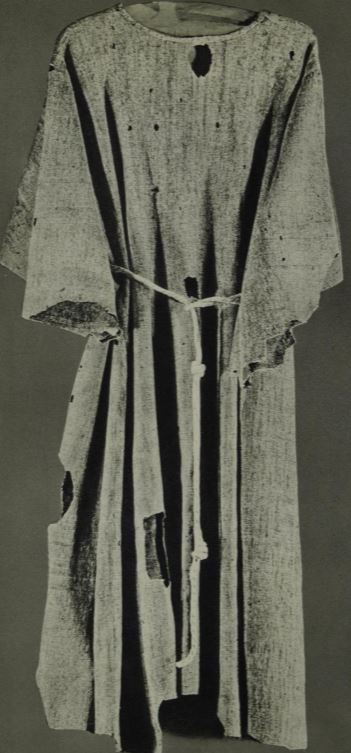
Tunic worn by Franciscans. This one is preserved at Basilica of Saint Clare at Assisi.
Spreading Revival
By 1209 Francis had 11 followers, some of them highly influential. To keep his group from being persecuted by the Catholic Church and labeled heretical like the Waldensians, Francis and his followers went to Rome to request permission to start a new religious organization (Order) within the Catholic Church (the first of three). The Pope granted the request, and the group was tonsured, that is, they had the top of their hair cut, showing their submission and loyalty to the Church.
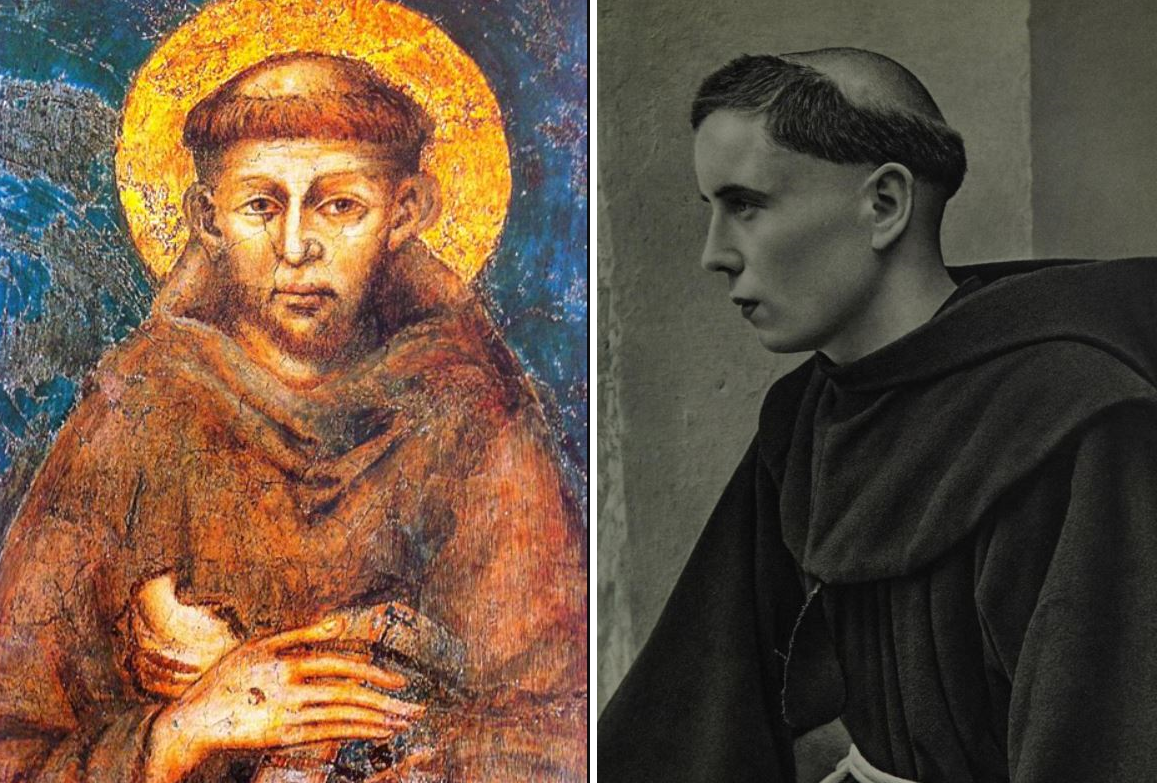
Heads tonsured. Painting of Francis on left, and a young friar from the 1950s on the right, who was at the Sanctuary of Fonte, Colombo, Italy.
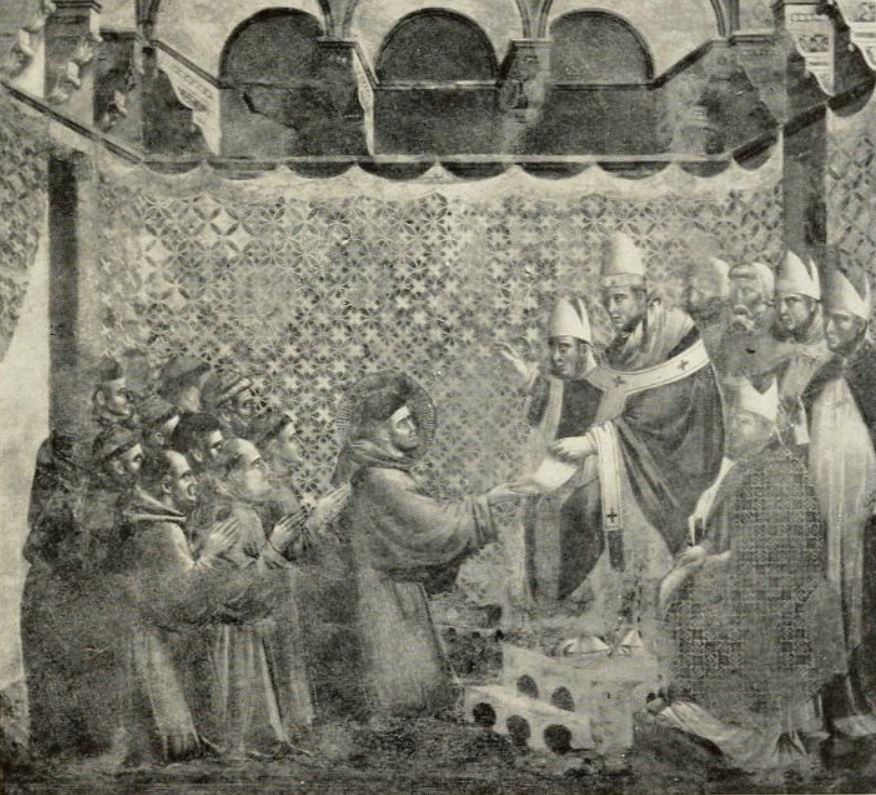
Francis and his followers before Pope Innocent III, requesting permission to start a religious organization (Order)
Missionary Movement
The friars that were part of this new organization (Order) were street preachers with no possessions. With the headquarters being the chapel known as Porziuncola, they preached in the area of Umbria first, and then rapidly spread throughout Italy, and ultimately the world.
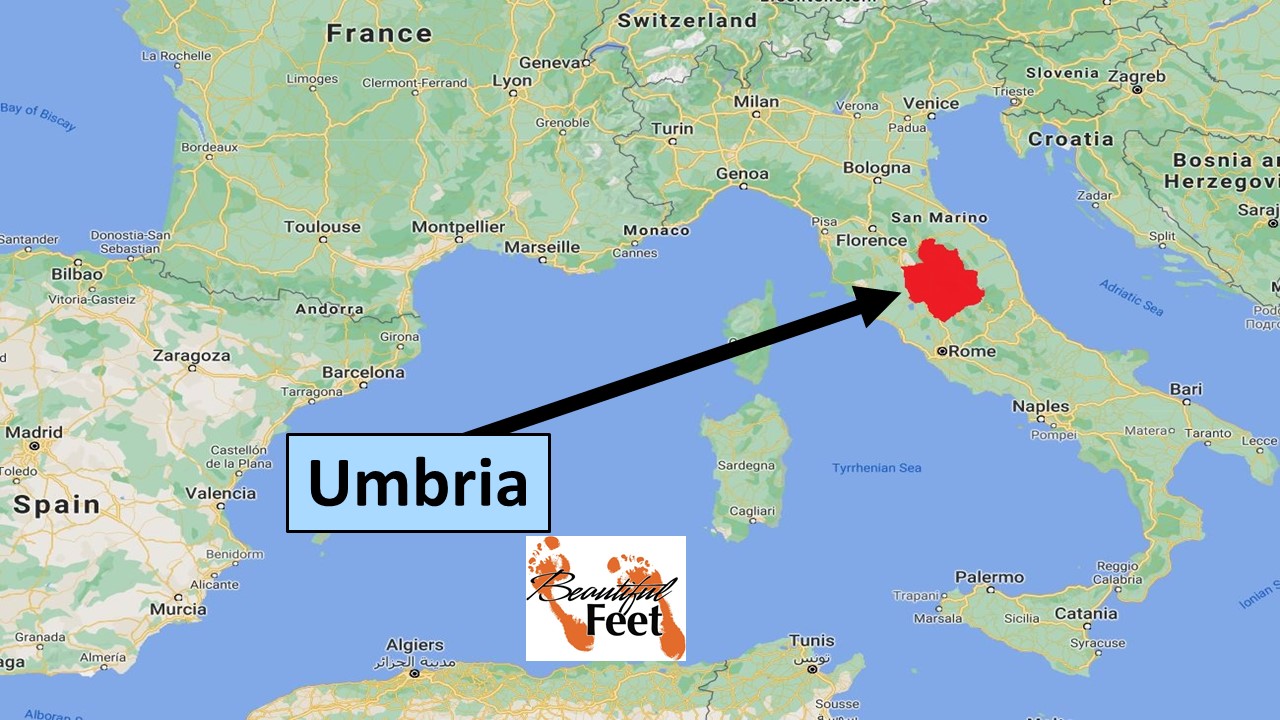
The area where the Franciscan’s initially preached
Second Organization (Order) Started
In 1212 Francis founded a second organization, this one for women. That became known as the Poor Clares, or the Order of St. Clare (Clara of Assisi).
The followers of Clare used the San Damiano church as their monastery, as they did not conduct street preaching like the friars of the first Order.
Third Organization (Order)
As the fame of Francis and his group spread, more and more began to stream to the Porziuncola. All of Italy was stirred with what God was doing through the Franciscans, and there was a new passion for spiritual things, and a hope for better days ahead.
Many wanted to join the Franciscans, but because of their family situation or employment, they were prevented from doing so. To enable these people to also join the movement, Francis started the third organization, in 1221, called the Third Order of Brothers and Sisters of Penance. This was a lay organization that allowed membership, of men or women, without having to withdraw from the world or take religious vows. This led to the movement swelling into the thousands, with nobles and cardinals of the Catholic Church also joining.
Death of Francis
Francis died at the Porziuncola in Assisi on October 3, 1226. He was 44 years of age.
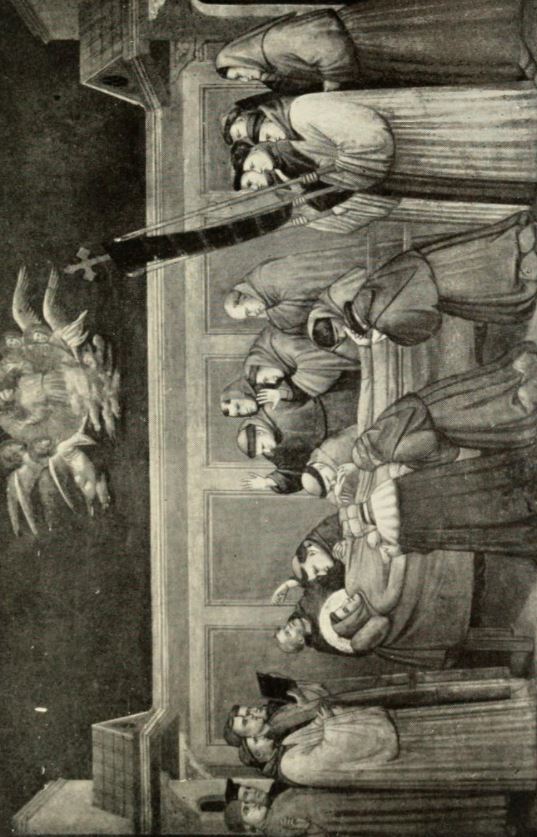
Death of Francis in the Porziuncola
Revival Came to a Rapid End
Though the Franciscans started out preaching brotherly love and peace, within just ten years after Francis’ death in 1226, this revival of peace deteriorated into ruthless and barbaric acts. In 1236, Pope Gregory IX appointed the Franciscans as its official Inquisitors, and they used torture or death to terrorize and force submission of those who, like Francis, had been calling for reform within the Church.
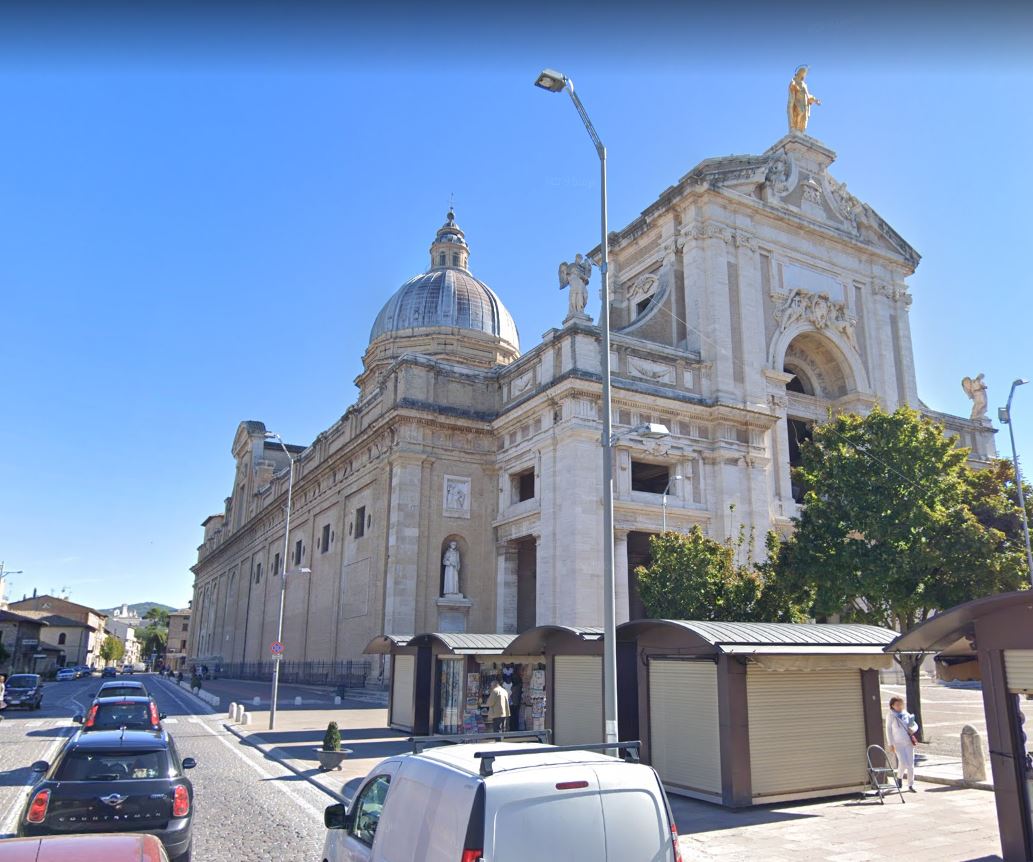
Basilica of Saint Mary of the Angels
The Porziuncola, is located inside this structure
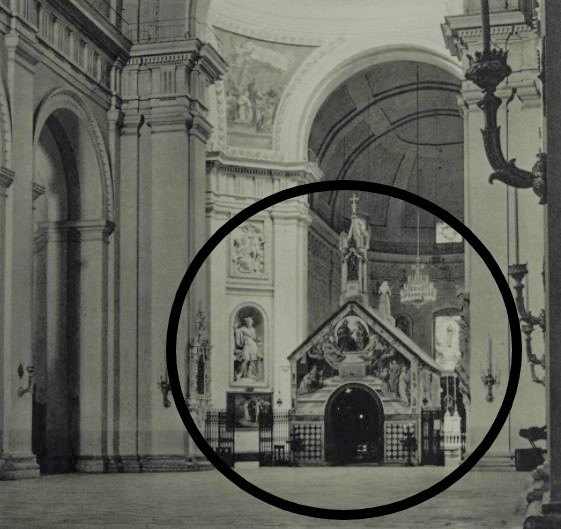
The Porziuncola (circled)
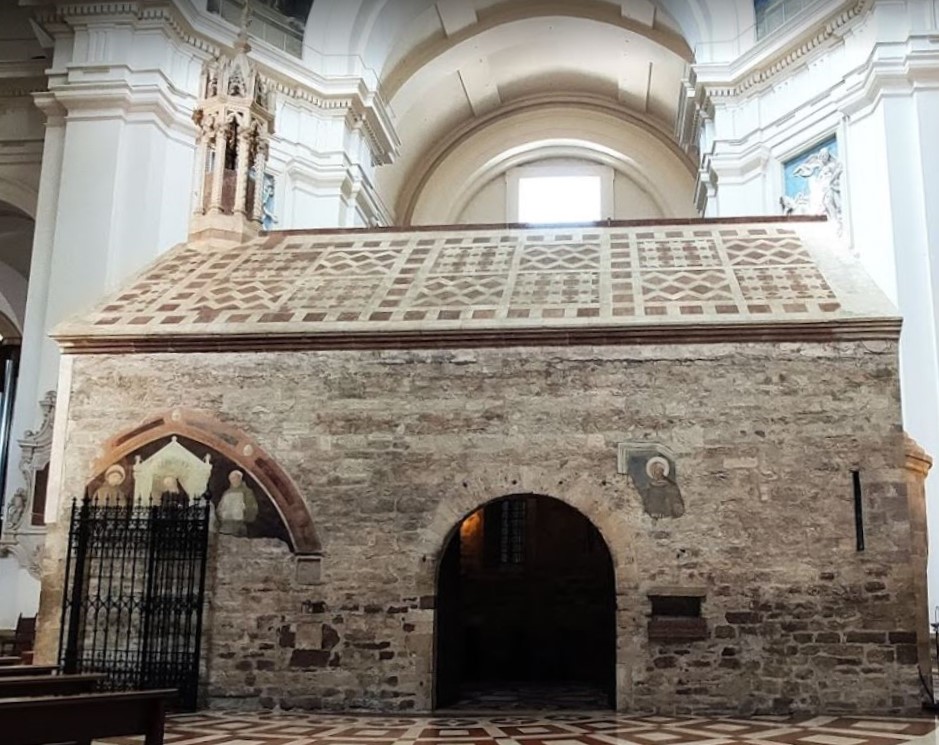
Side view of the Porziuncola, inside the Basilica of Saint Mary of the Angels
The small chapel in which Francis died, known as the Porziuncola, has since been built around by the Basilica of Saint Mary of the Angels. The Porziuncola within this Basilica has become the most sacred place for Franciscans. More pictures of the Porziuncola, can be seen with this link.
Primary Sources
► Franciscans by Wikipedia
► Francis of Assisi by John Holland Smith
► Francis of Assisi by Anna M. Stoddart
► Francis of Assisi by Wikipedia
► Revivals Their Laws and Leaders by James Burns
► Saint Francis of Assisi by Lawrence Cunningham
► St. Francis of Assisi: A Pictorial biography by Leonard von Matt
► The Franciscan Rule by Britannica
► The Basilica of St. Francis in Assisi by Elvio Lunghi
► The Basilica of St. Francis of Assisi: Glory and Destruction by Giorgio Bonsanti
► The Lives of St. Francis of Assisi by Thomas of Celano
► The Rule of St. Francis by Order of Friars
► The Seraphic Keepsake: A Talisman Against Temptation by Francis of Assisi
Secondary Sources
► Francis of Assisi by Margaret Oliphant
► Life of Saint Francis of Assisi by Father Cuthbert
► Life of St. Francis of Assisi by Paul Sabatier
► Mirror of Christ; Francis of Assisi by Isidore O’Brien
► My God and My All; The Life of St. Francis of Assisi by Elizabeth Goudge
► Saint Francis of Assisi: A Biography by Omer Englebert
► Thomas of Celano’s First Life of St. Francis of Assisi by Thomas of Celano
Return to List of Revival Stories
Chet & Phyllis Swearingen
(260) 920-8248
romans1015@outlook.com
Beautiful Feet
P.O. Box 915
Auburn, IN 46706

